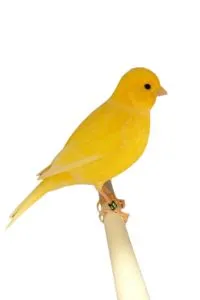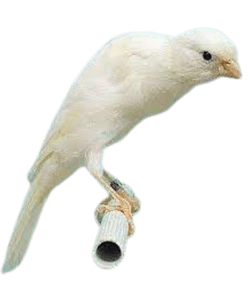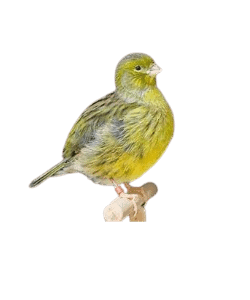Can a Canary Talk?

Canaries, known for their melodious songs and lively antics, are kept by many as pet birds. Their small size, bright plumage, and vocal talents make them endearing companions. However, while canaries have a wide repertoire of chirps, songs, and calls, their ability to mimic human speech is quite limited compared to some other avian species.
Canary Vocalizations

Physical Constraints
There are anatomical constraints that limit a canary’s capacity to mimic speech. Their syrinx, or vocal organ, is simpler than in species that excel at mimicry. Canaries also lack the tongue musculature that enables the complex articulation of words in other birds. Additionally, their small, pointed beaks are not well suited for reproducing a wide diversity of sounds, unlike birds with large rounded beaks. So they face physical limitations.
Documented Talking Canaries

Training Canaries to Talk | Can a canary talk?
It is possible to train some canaries to mimic speech with intense effort. Training would need to begin when very young and involve consistent positive reinforcement. The training would be a time-consuming process over months or years and require much patience. Even then, a canary may only reliably learn a couple recognizable words or short phrases at most. Complex conversations are not realistic. Their anatomy limits how accurately they can pronounce words. So speech mimicry remains challenging and an atypical talent.
Canaries are well known for their melodious songs, but they are not capable of true speech like humans. However, they can exhibit a form of mimicry and can learn to imitate certain sounds and even short phrases.
Here are seven facts about canary birds and their ability to “talk”:
Melodic Imitation: Canaries have a remarkable ability to mimic sounds, including human speech and other environmental noises. While they cannot replicate complex words or sentences, they can imitate simple tunes, whistles, and even some basic phrases.
Limited Vocabulary: Canaries have a limited capacity for learning sounds, and their imitation is primarily based on repetition. They can learn a small repertoire of sounds, usually consisting of a few distinct notes or phrases.
Early Learning: Canaries are most receptive to learning new sounds and songs during their early developmental stages, typically when they are young chicks. Exposure to various sounds and consistent repetition during this time can increase the chances of successful mimicry.
Individual Variability: Just like humans, some canaries may have a greater aptitude for mimicry than others. Some individuals may excel at imitating specific sounds or pitches, while others may struggle to replicate even simple tunes.
Environmental Influence: Canaries are more likely to imitate sounds that are prevalent in their environment. If they are exposed to certain sounds or phrases regularly, they may incorporate those sounds into their song.
Reinforcement: Positive reinforcement, such as treats or attention, can encourage a canary to repeat certain sounds or phrases. Over time, they may associate certain sounds with rewards and be more inclined to mimic them.
Natural Vocal Abilities: While canaries may imitate sounds, their primary mode of communication is through singing. Male canaries sing to establish territory, attract mates, and communicate with other birds. Their intricate songs are the result of a combination of innate genetic factors and learning from other birds.
In summary, canaries can not talk, and most canaries are not naturally inclined or able to imitate speech to any significant degree. They lack the physical traits that enable clear pronunciation. However, some can pick up minimal speech mimicry with dedicated training. While a talking canary is intriguing, their vocal talents are better appreciated through their diverse songs and calls. Trying to teach speech diverts from appreciating canaries’ natural behaviors. Their voices beautifully evolved for song rather than speech.


